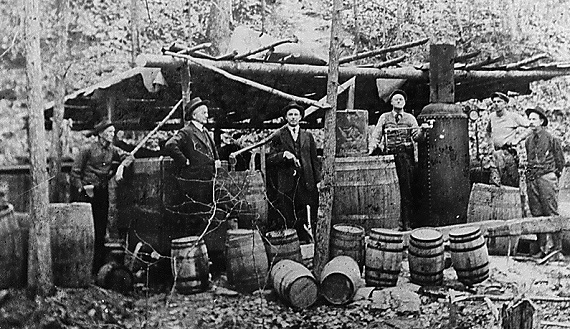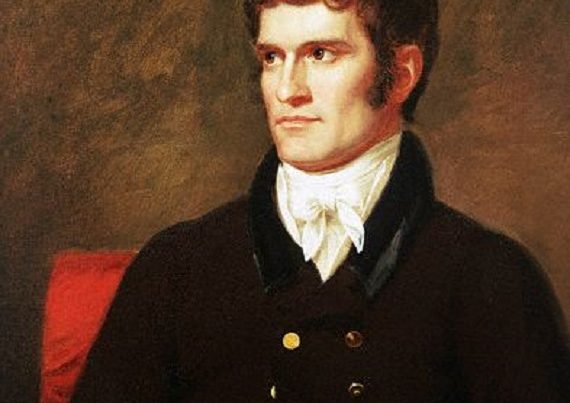Stewart, Bruce E. Moonshiners and Prohibitionists: The Battle over Alcohol in Southern Appalachia. Lexington: The University of Kentucky Press, 2011.
Interest in southern Appalachian history and culture is growing in the academy. Moonshining is one particular area that is beginning to fascinate both the scholar and history buff. From the popular Discovery Channel show “Moonshiners,” to the growing number of articles and books, the history of illegal whiskey and its related culture hold a powerful draw. I am fascinated with the topic because of my own history. I grew up in the Appalachian foothills on a tributary of the French Broad River in northeast Georgia, the same river that supplied many of the western North Carolina moonshiners Bruce E. Stewart writes about in his compelling book, Moonshiners and Prohibitionists: The Battle over Alcohol in Southern Appalachia.
My Christian upbringing insured awareness of moonshine’s dark side, but familial association with local people and ways make its cultural mores strangely meaningful. Stories of whiskey stills and liquor-running were commonplace in my childhood. My daddy talked of going to the woods as a kid to secure liquor left for his father in a secret location. I had a neighbor who was one of the original NASCAR drivers, and everyone knows how NASCAR got its start! The sheriff arrested his brother, a deacon, choir leader, and state legislator, caught with a trunk full of moonshine destined for his cronies at the state capital. Another gentleman, a beloved member and deacon of my home church (Broad River Baptist) had been a prominent moonshiner in our community. My parents pointed to his Christian conversion and godly life to reinforce the benefits of faith and sobriety on their children.
My maternal grandfather had a reputation as one of the most skilled master-craftsman of whiskey stills in northeast Georgia. My mother was always quick to stress that her daddy never made the actual liquor, only the equipment—but, she added, he was very good at what he did. She told me stories of how she and her siblings would keep watch while her father worked his craft. They had a routine way to cover the materials in his shop when suspicious visitors showed up. Rare was the individual in my parent’s generation not touched in one way or the other by moonshine. My exposure was mainly through stories, but my parents lived it.
That transition, from illegal whiskey as a rule to an exception is the transition Stewart seeks to explain. Most academics approach southern cultural history, especially mountain history, as if its people and folkways are elements in a petri dish or under a microscope. Rarely are southern mountaineers taken in their own complex setting and almost never presented apart from contrived stereotypes. Moonshiners and Prohibitionists is a refreshing exception. Stewart is keenly aware of the stereotypical mythmaking that has surrounded this region and goes far in his deeply researched and beautifully written monograph to present a culture as authentic as it is complex.
Reform minded northerners were typically hopeful that since southern mountaineers were of “pure Anglo-Saxon stock” they, unlike blacks, could eventually transition into modern civilization (173). Even still, Stewart points out that northerners stereotyped moonshiners with descriptions eerily similar to their common assessment of blacks and Indians: compliant, subservient, and savage. As one northern commentator noted, a southern moonshiner who found himself in a civilized urban setting “is as mild-looking a man as is ever seen” but is among “the poorest and most ignorant classes” (156). But, as Stewart makes clear, North Carolina “highlanders were neither as ignorant nor as drunk as reformers portrayed them” (171).
Stewart argues that moonshining had deep and respectable roots in western North Carolina. Scots-Irish settlers into the Carolinas brought moonshining expertise to the region by the 1740s. As David Hackett Fischer noted, whiskey “distilled from grain” was “the distinctive backcountry beverage” both in the old country and the new. Moonshining would turn out to be one of the first cash producing industries in the region, providing a welcomed outlet for the corn market. Eighteenth and early nineteenth century distillers were “respected members of the community.” They were anything but “marginalized criminals.” They were “entrepreneurs providing a service” to their neighbors (10). Even with the social problems homemade whiskey created, most initially believed that the local benefits outweighed the negatives. Stewart points out that “the federal government had not yet levied a permanent liquor tax on antebellum distillers” in part because they saw them as businessmen “responding to the demands of the marketplace” (30). This respectable relationship would not last.
One of the central questions Stewart explores is how a folkway so important to the region fell out of legal and cultural favor. He concludes that through much give-and-take during the Antebellum and Reconstruction eras and beyond, rural and town folks in western North Carolina slowly moved away from the traditions of moonshining and developed their own ideals of prohibition, progress, and uplift largely apart from external influences. Stewart believes that southern generated urban and industrial influences prompted North Carolina’s evolution toward favoring local options and state-wide prohibition, even among country dwellers. More than an outside impact, the change came from within. “. . . Southern prohibitionists were able to establish support for their cause well before the arrival of northern reformers . . . at the turn of the twentieth century” (215).
Stewart clearly shows that southern mountaineers were far from simple objects of uplift awaiting northern salvation. They could make up their own minds and did not need outsiders to tell them what to do. A good example of locally driven progress was the push for railroads and industry. After Reconstruction “many southerners” lobbied for “a New South” of “industry, agricultural efficiency, and cheap labor.” These mainly “middleclass townspeople” in turn sought “to create a new industrial social order” to reform their rural “brethren” (118). Though slow to come around, a more industrialized “South emerged as the leading champion in the nation’s fight against King Alcohol” (118).
Southern urban and rural folks followed in the path of temperance reform sooner and with more resolve than many believe. Stewart’s meticulous research makes this point abundantly clear, possibly clearer than anyone has ever shown. The point Stewart may not emphasize enough, however, is that industrial, urban, and evangelical influences were in large measure intentional efforts to re-make the mountain South into a northern image. That locals fell in line with reform efforts for economic or religious reasons does not change this fact.
Stewart chronicles northern influences but does not follow through with their full implications. He provides evidence that comes close to contradicting his claim of a self-generated southern reform movement. The latter part of the nineteenth century saw “Northern and—to a lesser extent—southern evangelicals” moving into Appalachia seeking to reform the region. The American Missionary Association (AMA) believed that if Appalachia would “arise to the level with the rest of our country,” one advocate wrote, it would be due to northern “efforts” of benevolence (172). Outside religious organizations “played an important role in organizing schools and churches throughout southern Appalachia,” all with a strong propensity to “uplift” them into “mainstream” society (173). To be sure, there were locally driven anti-distiller movements before and after Reconstruction, but to imply that post-Reconstruction reform movements were predominantly southern in origin is to overlook the contextual reality of a region long under the heavy hand of intentional federal manipulation.
In the main, the above criticism is minor. Stewart’s meticulous research and genuine empathy comes through on every page. His ability to produce a complex and comprehensive history around the center-piece of moonshining is impressive, enjoyable, and convincing. While his desire to lessen the stereotypes of southern mountaineers goes too far in making them originators of their own northern-like reform, Stewart’s ability to show the region for what it was, a place with respectable and rich tradition, inhabited with colorful and compelling people, makes his book worth careful attention from scholars and general readers alike.







